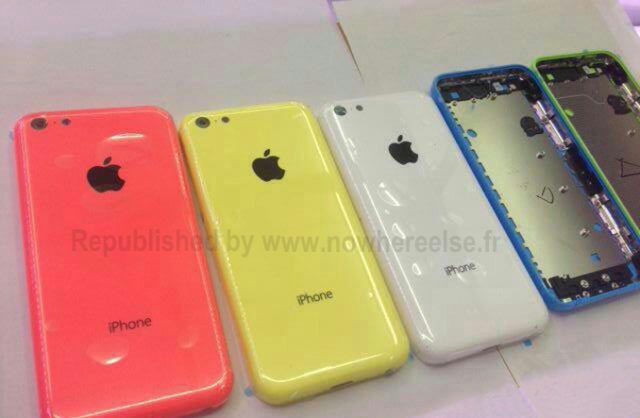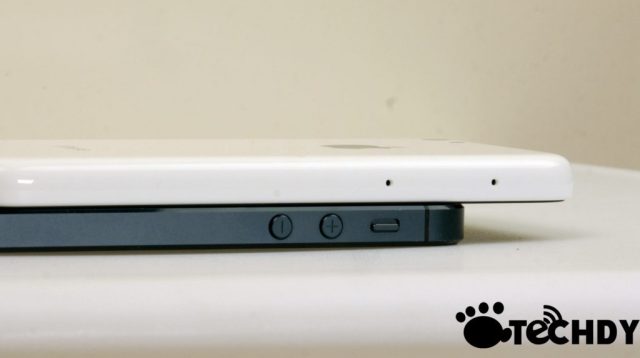
The Apple rumor mill has been predicting a "low-cost iPhone" for so long that it's tempting to dismiss new whispers immediately. Like the fabled Apple television set, it has so far been talked up mostly by analysts and rumor sites filling time between actual product announcements.
We don't know anything about Apple's future iPhone plans, and it is the company's wont to maintain radio silence on future products until it's actually up on stage rattling off the new product's features. That said, a new kind of iPhone made specifically to address more price-sensitive markets—the markets that the iPhone 4 and 4S address currently—actually doesn't sound all that ridiculous these days. Apple's current strategy of selling flagship models from previous years at a discount isn't particularly well-suited to a competitive landscape where the company's competitors spit out a new phone every few weeks. We don't yet know that this "low-cost iPhone" is real, but here's why it would make sense to produce one and what it might look like.
Apple be nimble, Apple be quick
The most convincing case to be made for this new iPhone's existence isn't cost, but flexibility.
As it stands, Apple releases a new iPhone every 12 to 18 months, while competitors like Samsung introduce two or three major, high-end handsets (and a huge shotgun blast of lower-end models) in the same span of time. Generally, the strategy of constantly releasing new hardware to fill every possible real and perceived market niche is probably wrong. It's this kind of endless segmentation that makes the PC buying experience so frustrating. But the constant iteration does keep even the low-end hardware from getting too stale.
Apple has no such safeguard. The way things work now, there are at least two years between the time Apple introduces new hardware features (things like the 4-inch, 1136×640 display and the Lightning connector) and the time that those features are standard across the entire lineup. Continuing to sell older hardware like the iPhone 4 and 4S completely unchanged in the years after new standards debut is just going to slow the adoption of those standards by app developers and accessory makers.
The same is also true of under-the-hood technologies. The 4S' A5 system-on-a-chip (SoC), which continues to power a surprising number of current iOS devices, is still powerful enough to drive features like Siri, 3D Flyover in the Maps app, AirPlay Mirroring, and all of the fancy new graphical effects in the upcoming iOS 7. However, Apple's pre-iPhone 5 reluctance to include LTE in its phones means that it's stuck with 3G data speeds (14.4 Mbps on HSPA+ networks, less in other cases), and it also lacks 5GHz 802.11n (and AirDrop compatibility, to say nothing of increased speed and decreased congestion). Developing two iPhones side-by-side, one flagship device and one lower-end device, would give Apple the ability to introduce smaller features like this across the lineup while still leaving a performance gap between the two for differentiation's sake.
Cutting costs and boosting margins

Cost-cutting has always been put forward as a reason why Apple would design a second, mid-tier device. Why not? The company is famous for maintaining high profit margins. If it could put together something for less than the iPhone 4 or 4S and sell it at the same price as one or the other of those models, that's just more money in Apple's pocket.
Consider the materials that Apple's flagship phones are typically made of: high-quality aluminum and glass. While we don't really know what Apple pays for its device enclosures, it's a pretty safe bet that the prices on these materials fall less readily over time than, say, baseband chips or SoCs, which are generally replaced by newer, better versions at a faster clip. If you have to sell a product for $450 or $549 (the unlocked prices of the iPhone 4 and 4S, respectively), your margins will likely benefit if you can get away with housing the components in plastic rather than metal. Alternatively, you could always drop the base price of the phone while keeping margins level. That could help Apple out in emerging markets and places where carrier subsidies aren't as pervasive as they are in the US.
Finally, consider that Apple's big margins come in part from its control over its supply chain. The company tends to standardize whenever it can across its Mac and iOS lineups to cut down on complexity and to get volume discounts on components. Compare the iPhone 5 to the fifth-generation iPod touch, for example, and you'll find that the two use identical display panels, Wi-Fi adapters, audio codecs, and other components. It's entirely possible that, through volume discounts, Apple could get better screens and other chips for a lower-cost iPhone without paying drastically more than what it spends for the older components shipping in the iPhone 4 and 4S.
What’s it look like?

Now that we've established why Apple might want to develop a so-called low-cost iPhone, there are two final questions to answer: what does the phone look and feel like, and what's inside it? For Apple, the key here will be to create a product that can serve the same market that the current iPhone 4 and 4S serve without completely cannibalizing the high-end market that the iPhone 5 serves.
Pictures and video of what purport to be actual rear casings for a new plastic iPhone have been surfacing left and right over the last couple of months. These may or may not be final or even real, but they're probably indicative of what a plastic iPhone would look like—simple, multicolored plastic shells that are a bit thicker than the iPhone 5's aluminum one.
Using a shell like this would differentiate the low-cost iPhone from the high-end iPhone in the same way that the MacBook Pro was differentiated from the old white plastic MacBook. Both were reasonably well-put-together (especially once the unibody designs were released), but the Pro was always the faster and better-feeling machine.
Otherwise, these purported casings point to a low-cost iPhone with all of the hallmarks of a modern iOS device: a Lightning connector, the taller 4-inch screen, and a camera with an LED flash. One assumes that, for differentiation's sake, this low-cost iPhone will use a lesser camera than that used by the current flagship in the same way the iPad, iPad mini, and the iPod touch use lesser cameras. However, all of the software features supported by the iOS 7 camera—filters, HDR, Panorama mode, flash—seem likely to make it over intact.
The rest of the phone's insides would probably take a similar approach: offer the same platform features across both phones, just make sure that the flagship iPhone offers clearly faster and superior versions of those features. In fact, I wouldn't be surprised if this new, cheaper iPhone looked a lot like the current iPod touch with a cellular antenna (and a slightly larger battery) added. That device's A5 SoC (and its tall screen and dual-band networking hardware) can still deliver on everything iOS 7 is promising, but at this point that chip is slow enough relative to the A6 (and whatever A6 follow-up Apple might have waiting in the wings for this year's flagship iPhone) that Apple should have no problem selling many people up to the faster high-end iPhone.
It's also entirely possible that Apple would want to use an A6 for this low-cost iPhone to give it a longer lifecycle—the A5 has done a good job for almost two-and-a-half years now, but that's an eternity in smartphone SoC years. Either way, expect the chip at the heart of this new iPhone to be something we've seen before (or, at the most, something we've seen before built on a new manufacturing process that will filter out across the entire product line). Apple has enough existing chips that would be suitable for this kind of device that building something entirely new for it seems unlikely.
Apple already does this; just look at the Macs

Apple's iOS lineup is in a strange state of flux at the moment. The company offers three different iPhones, but only one of them uses its new screen and Lightning cable. It also offers three different iPads: the iPad 2 (which sells for $399 and uses the 30-pin connector), the iPad mini (which sells for $329 and uses Lightning), and the Retina iPad (which sells for $499 and uses Lightning). It's an awkward hodgepodge of old and new, and it highlights the weakness of Apple's sell-last-year's-model-at-a-discount strategy: new technologies simply take longer to propagate. The transitional period can be potentially confusing for consumers.
This year, I could see Apple cutting this lineup down to four basic products: the flagship iPhone, the "low-cost" iPhone, the full-size iPad, and the iPad mini. This would give each class of device a clearly differentiated entry-level and high-end model, and it would mirror what Apple does on the Mac side of the house to keep the product matrix from getting too crowded and confusing.
Apple doesn't sell the 2013 MacBook Air as a high-end model and then keep a 2012 model around as an entry-level unit. It maintains both an 11-inch entry-level model and a 13-inch model with a larger, higher-resolution display, and it can update both products with the new technologies every year. Mirroring this model with its iPhones is one thing that can help Apple keep its edge in an increasingly crowded and competitive mobile market.
reader comments
151